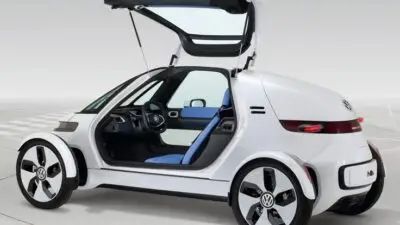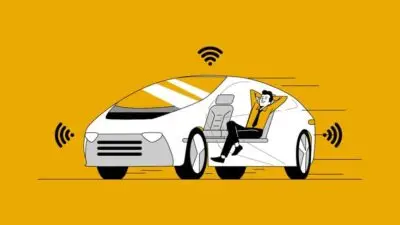Remember those sci-fi movies from the 1950s and 60s? They painted a future where we’d all zip around in flying cars and strap on jetpacks for our morning commute. Yet here we are in 2025, and despite decades of technological advancement, the flying personal transportation promised in popular culture remains largely confined to science fiction rather than our daily reality.

The gap between what we were promised and what we actually got has become a cultural touchstone. As one article puts it, we were promised jetpacks and flying cars, but the future took a different path. Instead of personal flying machines, we developed smartphones, the internet, and AI systems that would have seemed equally magical to past generations.
That’s not to say the dream is dead. Prototypes exist, and some companies continue working on these technologies. But the visual shorthand for the near future that dominated 20th-century imagination faces significant real-world obstacles—from physical limitations to practical concerns about safety, cost, and environmental impact.
Key Takeaways
- The flying cars and jetpacks promised in mid-century futurism have largely failed to materialize despite significant technological advancement in other areas.
- Technical challenges, safety concerns, and practical limitations have prevented widespread adoption of personal flying transportation.
- Development continues on flying vehicles and personal flight technology, but with significantly different approaches than originally envisioned.
Historical Promises of Flight

The dream of personal flight has captivated human imagination for decades. Various technologies were envisioned as solutions to give humans wings, with many concepts emerging from both wartime innovation and creative fiction.
Science Fiction Dreams and World War II
Science fiction writers in the early 20th century popularized the concept of personal flight devices. The idea of a jet pack was first conceived in 1919, just sixteen years after the Wright brothers’ first flight. This timing shows how quickly humans dreamed beyond basic aviation.
World War II accelerated aviation technology dramatically. Military research produced rocket packs and experimental personal flight devices. The German Himmelstürmer (“Heaven Stormer”) project attempted to create individual flying devices for soldiers.
After the war, companies like Bell Aerosystems developed the rocket belt, demonstrated at the 1964 World’s Fair. These real-world devices, though limited by fuel capacity and flight time, reinforced the public belief that personal flight was just around the corner.
Steampunk and Retrofuturism
Steampunk reimagined Victorian-era flight with brass, steam, and mechanical ingenuity. This genre portrayed elaborate personal flying machines with spinning rotors, steam engines, and mechanical wings. The aesthetic combined 19th century materials with imagined advanced technology.
Retrofuturism looked back at these historical predictions with nostalgia and irony. It celebrated the optimistic visions of personal flight from earlier eras while acknowledging their technological limitations.
The 1950s and 60s saw magazines like Popular Science and Popular Mechanics regularly featuring cover stories about flying cars and personal jet packs. These publications promised that such technologies would be commonplace by the 1970s or 2000s.
These artistic movements helped preserve and mythologize the unfulfilled promises of personal flight technology, keeping the dream alive despite practical limitations.
Technological Developments

The quest for personal flying vehicles has seen remarkable advances despite the absence of widespread adoption. Modern engineering and materials science have transformed theoretical concepts into working prototypes, though significant hurdles remain.
Innovation in Personal Transportation
Flying car prototypes have evolved significantly since the 1950s. Companies like Terrafugia, AeroMobil, and PAL-V have developed vehicles that can both drive on roads and fly. The Terrafugia Transition received FAA approval in 2020, marking a significant milestone.


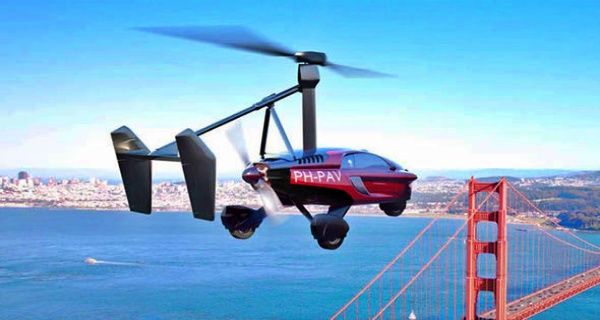
Jetpack technology has also progressed. The Martin Jetpack can fly for about 30 minutes at speeds up to 45 mph. JetPack Aviation’s JB-series offers more sophisticated designs with higher speeds.
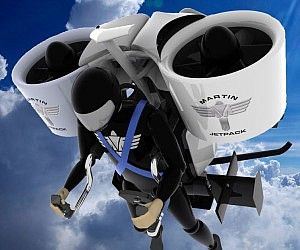
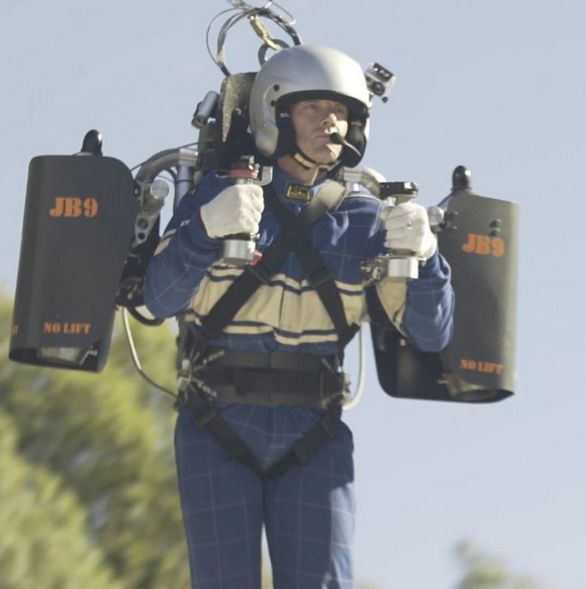
Battery limitations remain a key obstacle. Most current prototypes rely on traditional fuel, though electric versions are in development.
Safety regulations and air traffic control systems need updating before flying personal vehicles can become mainstream.
Apple and the Tech Industry’s Role
Tech giants have shown increasing interest in transportation innovation. Apple’s Project Titan, though focused on autonomous vehicles rather than flying cars, demonstrates the tech industry’s transportation ambitions.
Uber Elevate (now part of Joby Aviation) was developing air taxi services before being acquired. These initiatives represent how tech companies are reshaping transportation concepts.
Silicon Valley funding has accelerated aviation startups. Google co-founder Larry Page backed Kitty Hawk, while Tesla’s Elon Musk has proposed the Hyperloop transportation system as an alternative to traditional transit.

The tech industry’s involvement has shifted from the mechanical engineering approach of the 20th century to software-hardware integration, with AI becoming central to solving complex air mobility challenges.
Modern Art and Creativity

The realms of modern art and creativity have played crucial roles in shaping our visions of futuristic transportation. Artists and designers have long influenced how we imagine tomorrow’s technology, often before engineers could make such dreams possible.
The Influence of Modern Art on Design
Italian Futurism, emerging in the early 20th century, celebrated speed, technology, and motion—directly inspiring early concepts of flying vehicles. Artists like Umberto Boccioni and Giacomo Balla depicted dynamic movement that later influenced aerodynamic designs in transportation.
The Streamline Moderne movement of the 1930s and 1940s brought sleek, aerodynamic aesthetics to everyday objects. This artistic approach carried over to flying car concepts and jetpack designs.
Pop Art in the 1960s further popularized futuristic transportation in visual culture. Artists like Peter Max created psychedelic visions of flying vehicles that became embedded in public consciousness.
Science fiction magazine illustrations, particularly from the 1950s-1970s, established visual expectations for personal flight that continue influencing designers today.
Creativity in Engineering Futuristic Concepts
Engineering creativity manifests differently than artistic expression but remains equally important to futuristic transportation. Engineers approaching jetpack design had to think beyond conventional propulsion systems.
The Bell Rocket Belt, developed in the 1960s, represented creative problem-solving despite its practical limitations. Engineers combined multiple disciplines to create a functioning, if limited, personal flight system.
Today’s vertical takeoff and landing (VTOL) vehicles represent creative solutions to old flying car problems. Companies like Lilium and Joby Aviation have reimagined traditional flight mechanics using electric propulsion and computer-controlled stability.
Material science innovations have enabled creative new approaches. Carbon fiber composites, ultra-lightweight alloys, and advanced battery technology have expanded what engineers can envision as possible.
Challenges and Considerations

The development of flying cars and jetpacks faces significant hurdles that have delayed their widespread adoption. These obstacles range from complex engineering problems to concerns about safety and environmental impact.
Technical and Safety Challenges
Creating vehicles that can safely transition between ground and air travel requires solving numerous technical problems. The power-to-weight ratio remains a critical issue, as batteries haven’t advanced enough to provide sufficient energy density for extended flight times.
Safety systems must be far more robust than in conventional vehicles. Flying cars need redundant systems to prevent catastrophic failures. If a car breaks down, you pull over; if a flying car fails, it falls from the sky.
Pilot training presents another obstacle. The skills needed to operate these vehicles safely exceed what average drivers possess. This creates a patience challenge for companies hoping for mass adoption.
Navigation in three-dimensional space presents unique challenges. Systems must prevent mid-air collisions while integrating with existing air traffic control networks.
Weather vulnerability also limits reliability, as wind, rain, and storms pose greater risks to small flying vehicles than to ground transportation.
Environmental and Regulatory Hurdles
Noise pollution represents a major concern for urban air mobility. Current prototypes generate sound levels that would be inconvenient and disruptive in residential areas.
Energy consumption rates for vertical takeoff and landing vehicles exceed those of ground transportation. This environmental impact must be addressed to gain public understanding and acceptance.
Regulatory frameworks for flying cars remain underdeveloped. Aviation authorities must create new certification categories and safety standards specifically for these hybrid vehicles.
Air traffic management systems need significant upgrades to handle thousands of new low-altitude vehicles. Current systems cannot accommodate the potential density of flying cars in urban airspace.
Insurance and liability issues present complex challenges. Determining responsibility in accidents involving flying vehicles requires new legal frameworks and support from lawmakers and insurers.
Societal Impact

The gap between our technological fantasies and reality has shaped public attitudes toward innovation. People’s expectations, support levels, and tolerance for inconvenience all play crucial roles in determining which futuristic technologies ultimately succeed.
Managing Expectations and Patience
Our collective disappointment with the absence of flying cars and jetpacks stems from decades of science fiction and optimistic predictions. This creates a unique psychological challenge.
When technologies fail to materialize on schedule, public patience wears thin. Studies show that repeated unfulfilled technological promises lead to skepticism about future innovations.
Companies now take more measured approaches when announcing breakthrough technologies. The “underpromise, overdeliver” strategy has become standard practice in tech development.
Education about realistic timelines for complex technologies helps adjust expectations. When people understand the technical hurdles behind flying vehicles, they develop more patience with incremental advances.
Some experts argue this patience deficit has actually accelerated innovation in other areas. When flying cars stalled, resources shifted to more immediately achievable technologies.
Support for Ongoing Innovations
Public and private support remains essential for turning futuristic concepts into reality. Investment patterns reveal how technological innovations depend on consistent backing through difficult development phases.
Government funding programs like DARPA continue exploring personal flight technologies, albeit with more realistic timelines. These efforts maintain progress despite commercial setbacks.
Consumer willingness to support early-stage technologies through crowdfunding has created new pathways for development. Projects that might have died in corporate labs now find direct public backing.
Corporations have shifted toward more transparent development processes. This transparency builds public trust and maintains support through inevitable delays and setbacks.
Educational institutions play a crucial role by training engineers with skills needed for these complex challenges. The talent pipeline remains a critical factor in advancing personal flight technologies.
The Inconvenience Factor in Adoption
Even when futuristic technologies become technically feasible, practical inconveniences often prevent widespread adoption. The broken promise of personal flight includes overlooked complications that make implementation difficult.
Infrastructure requirements present major barriers. Flying cars need landing pads, air traffic control systems, and maintenance facilities that don’t currently exist at scale.
Safety regulations create necessary but significant hurdles. The certification process for personal aircraft involves thousands of hours of testing and millions in compliance costs.
Noise and privacy concerns generate neighborhood resistance. Few communities welcome the prospect of personal aircraft buzzing overhead at all hours.
Learning curves deter potential users. Operating personal aircraft requires training far beyond what’s needed for ground transportation, limiting the potential user base.
Economic calculations often favor existing technologies. When all costs are considered, many promised technologies struggle to compete with incremental improvements to existing systems.
Speculative Futures

Our visions of future technology often reflect deeper cultural hopes and technological trajectories of their time. These imagined futures continue to influence both inventors and public expectations.
Predicting the Next Wave of Tech
Tech predictions have always been a mixture of scientific extrapolation and creative imagination. In the 1950s and 60s, many experts confidently predicted personal flying vehicles would become commonplace by the early 2000s. These predictions weren’t entirely unfounded – they followed logical extensions of aviation advancements after World War II.
Today’s tech forecasters face similar challenges. They must balance between what seems technically possible and what might actually become practical. Companies like Uber and Boeing are investing in flying taxi concepts, suggesting these technologies might eventually arrive in modified forms.
Emerging fields like quantum computing, brain-computer interfaces, and space tourism represent today’s version of yesterday’s flying cars – technologies that seem both inevitable and perpetually five years away.
The Role of Anthologies in Shaping Expectations
Popular science fiction anthologies and media have significantly shaped our technological expectations. Collections like “The Gernsback Continuum” and TV shows like “The Jetsons” created lasting visual languages for future tech.
These creative works didn’t just entertain – they established benchmarks against which we measure technological progress. When people lament, “Where is the future we were promised?” they’re often referencing images and stories from these influential anthologies.
The anthology format proves particularly powerful because it presents multiple possible futures side-by-side. This creates a mosaic of technological possibilities that feels more comprehensive and inevitable than any single prediction.
Tech companies increasingly employ science fiction writers as consultants, recognizing how these creative visions help shape both product development and public reception.
Conclusion

The gap between our technological dreams and reality reflects both our imaginative aspirations and practical limitations. While flying cars and jetpacks haven’t materialized as expected, their promise continues to shape innovation and progress.
Harnessing Patience and Support for Future Tech
Technological breakthroughs often take decades longer than anticipated. The benefits of electrification, as one researcher points out, required several decades to fully materialize in society. This pattern repeats with many transformative technologies.
Future transportation innovations require both public enthusiasm and realistic expectations. Many promising technologies face regulatory hurdles, safety concerns, and infrastructure challenges before becoming mainstream.
Consumers can support innovative transportation by:
- Engaging with early prototypes and demonstrations
- Advocating for research funding
- Understanding that revolutionary tech develops incrementally
The disappointment many feel about unfulfilled technological promises reflects genuine childhood dreams. This emotional connection to futuristic transportation continues to drive inventors and entrepreneurs toward creating what once seemed impossible.
Frequently Asked Questions

The promise of flying cars and jetpacks raises many practical questions about technology requirements, safety concerns, and potential impacts on society. These devices face significant barriers to becoming everyday transportation options.
What technological advancements are necessary for flying cars to become mainstream?
Flying cars require several technological breakthroughs to become practical for everyday use. Battery energy density must improve significantly, as current batteries are too heavy for efficient flight with reasonable range.
Autonomous navigation systems need perfection to manage complex three-dimensional traffic patterns. Current systems aren’t reliable enough for widespread adoption.
Materials science must advance to create vehicles that are simultaneously lightweight, strong, and affordable for mass production. Safety and reliability standards must also exceed those of ground vehicles.
How do emerging technologies impact the development of personal flight devices, like jetpacks?
Miniaturization of jet engines has made jetpacks more practical than early designs. Modern jetpacks can now sustain flight for several minutes rather than mere seconds.
Computer-assisted stabilization systems have improved control and safety. Without these systems, jetpacks remain extremely difficult to pilot.
Advanced materials have reduced weight while maintaining structural integrity. However, fuel efficiency and noise levels remain significant obstacles to widespread adoption.
What are the potential societal implications of widespread flying vehicle usage?
Privacy concerns would increase dramatically with flying vehicles able to access previously private spaces. Residential areas would need new regulations regarding aerial access.
Economic disparities might widen, with flying vehicles initially available only to the wealthy. This could create two-tiered transportation systems.
Urban design would need complete reimagining to accommodate take-off and landing areas. Building designs and city planning would evolve to incorporate vertical transportation corridors.
How have depictions of flying cars and jetpacks in popular media influenced public expectations?
Science fiction has created unrealistic expectations about flying car capabilities and timelines. Movies and TV shows rarely address practical limitations like fuel consumption, noise, and safety.
The term “flying car” itself creates misleading expectations by suggesting a vehicle as convenient and affordable as a ground car. Media rarely shows the infrastructure changes needed.
Pop culture’s vision of personal flight has influenced actual development efforts. Many entrepreneurs cite childhood exposure to science fiction as motivation for pursuing these technologies.
What safety and regulatory challenges must be addressed to integrate flying cars into existing transportation infrastructures?
Air traffic control systems must be completely overhauled to handle thousands or millions of small aircraft. Current systems cannot manage the density and complexity this would create.
Licensing requirements would need to be far more stringent than for driving. Pilot licensing today requires hundreds of training hours.
Emergency response procedures for vehicle failures over populated areas present major challenges. Questions about reliability and public safety remain significant hurdles.
In which sectors are flying vehicles likely to be first adopted, and how might they transform those industries?
Emergency services will likely be early adopters, using flying vehicles for rapid response in congested areas. Ambulance drones could reach patients faster than ground vehicles in urban settings.
Luxury transportation will embrace flying vehicles as premium alternatives to helicopters. These services will initially operate in controlled environments with professional pilots.
Rural and difficult terrain regions may see practical implementations before dense urban areas. Places with poor road infrastructure or challenging geography create natural use cases for aerial vehicles.

